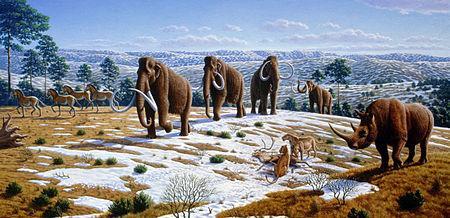While there is no such singular or essential thing as the “animist worldview,” this doesn’t prevent scholars and others from writing about it. Over the past 100 years, these worldviews were studied because they supposedly shed light on “primitive” thinking. Over the past 30 years, they have sometimes been studied (and mined) for insights they might offer into psychology, ecology, and politics. These latter “alternative” uses turn animists into foils — useful as counterpoints or critiques of modernity. Because we are rarely treated to all aspects of animist lifeways, including all the killing, this can often become uncritical adulation or romantic idealism.
If we could transport a crew back in time to film a year in the life of hunting and gathering animists, we’d probably be horrified by what a bloody affair it all was. Despite this, we have nature columnists such as John Burnside, waxing poetic (and partially true) about animists and their deep “spiritual” connection to all living things. That connection, of course, required a great deal of killing.
But let’s not dwell on the gory details — Burnside correctly senses that animist worlds are much different from our own:
For the Inuit, all life was continuous, animal with human with “spirit”, and recognising that continuum allowed them to undergo transformations that we, locked into our own disappointingly Cartesian skins, find impossible even to imagine. But the term “transformations” here is somewhat misleading, for what we usually think of as a transformation happens in a temporal realm that, (as any good, down-to-earth mystic will tell you), while it may be a highly useful convention for several excellent, and some not so excellent purposes, is also quite illusory.
As is becoming clear, it is easy to get tied up in semantic knots when trying to speak of the shamanic and the transformational.
It is indeed easy to get tied up in linguistic knots when trying to walk in animist shoes. Attempts to convey these ideas usually require long strings of adjectives such as those that I used in my post on RR Marett’s animatism. When writing that post, I was under the constant worry that it sounded too mystical though that certainly was not (and is not) my intent. These concepts are hard to describe using the dry, not very resonant, language of cognitive science.
This brings me to the subtitle of Burnside’s rumination: “We are living without the sense of the shamanic and the transformation that our forebears found vital for survival.” There certainly is something to this — I’m confident that animist worldviews are near perfect adaptations to hunting and gathering lifeways. Because we have supposedly become modern, these worldviews may seem out of place and time.
Perhaps so, but I often wonder what would happen if we plopped a breeding population of scientists into a re-wilded Pleistocene Park. These are people who understand how weather and ecosystems “really” work and how animals “actually” behave. Would they survive and thrive? I’m guessing not. Within a generation or two, their descendants would probably be more like animists than scientists.
This would be an interesting experiment. Your thoughts?


